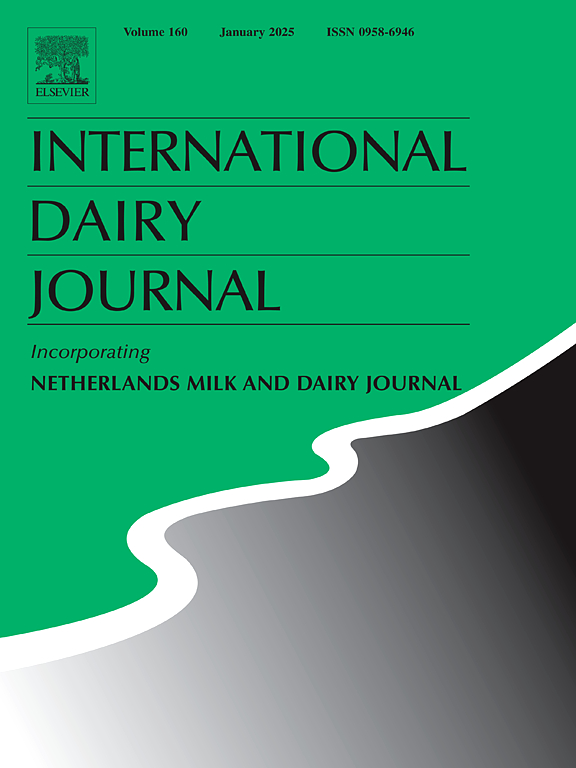季节和区域变化对哈萨克斯坦阿拉木图和赞别勒地区马奶和马奶细菌和真菌多样性的影响
IF 3.4
3区 农林科学
Q2 FOOD SCIENCE & TECHNOLOGY
引用次数: 0
摘要
研究了季节和区域变化对哈萨克斯坦南部马奶和马奶微生物多样性的影响。在7月至10月期间从阿拉木图和赞别勒的农场采集了样本(每个地区8个样本)。对马乳进行元分类分析,发现细菌38属85种,真菌17属84种。Koumiss样品中含有33种细菌和23种真菌。乳酸菌属是马乳的优势菌属,克卢维菌属、德克氏菌属和双足菌属是最常见的真菌属。Koumiss也显示出类似的微生物特征,优势种包括鸡乳杆菌、cremoris乳球菌、克卢维菌和brukkera bruxellensis。虽然这两种产品有共同的关键物种,但它们的相对丰度在不同的月份和地区有所不同。而马乳中含有病原菌和腐生菌,经发酵24 h后,病原菌和腐生菌被显著抑制。研究结果强调了地理和季节因素对发酵乳制品微生物群的影响。本文章由计算机程序翻译,如有差异,请以英文原文为准。
Effects of seasonal and regional variations on the bacterial and fungal biodiversity of mares’ milk and koumiss in the Almaty and Zhambyl regions of Kazakhstan
The effect of seasonal and regional changes on the microbial diversity of mares' milk and koumiss in southern Kazakhstan was examined. Samples were collected from farms in Almaty and Zhambyl (eight samples each area) between July and October. Metataxonomic analysis of mares' milk revealed 85 bacterial species from 38 genera and 84 fungal species from 17 genera. Koumiss samples contained 33 bacterial and 23 fungal species. Lactobacillus was the dominant bacterial genus in mares' milk, while Kluyveromyces, Dekkera, and Dipodascus were the most prevalent fungal genera. Koumiss showed a similar microbial profile, with dominant species including Lactobacillus gallinarum, Lactococcus cremoris, Kluyveromyces marxianus, and Dekkera bruxellensis. Although both products shared key species, their relative abundances varied across months and regions. While mares’ milk contained pathogens and saprophytes, these were significantly inhibited after 24 h of koumiss fermentation. The findings emphasize the influence of geographic and seasonal factors on fermented dairy microbiota.
求助全文
通过发布文献求助,成功后即可免费获取论文全文。
去求助
来源期刊

International Dairy Journal
工程技术-食品科技
CiteScore
6.50
自引率
9.70%
发文量
200
审稿时长
49 days
期刊介绍:
The International Dairy Journal publishes significant advancements in dairy science and technology in the form of research articles and critical reviews that are of relevance to the broader international dairy community. Within this scope, research on the science and technology of milk and dairy products and the nutritional and health aspects of dairy foods are included; the journal pays particular attention to applied research and its interface with the dairy industry.
The journal''s coverage includes the following, where directly applicable to dairy science and technology:
• Chemistry and physico-chemical properties of milk constituents
• Microbiology, food safety, enzymology, biotechnology
• Processing and engineering
• Emulsion science, food structure, and texture
• Raw material quality and effect on relevant products
• Flavour and off-flavour development
• Technological functionality and applications of dairy ingredients
• Sensory and consumer sciences
• Nutrition and substantiation of human health implications of milk components or dairy products
International Dairy Journal does not publish papers related to milk production, animal health and other aspects of on-farm milk production unless there is a clear relationship to dairy technology, human health or final product quality.
 求助内容:
求助内容: 应助结果提醒方式:
应助结果提醒方式:


